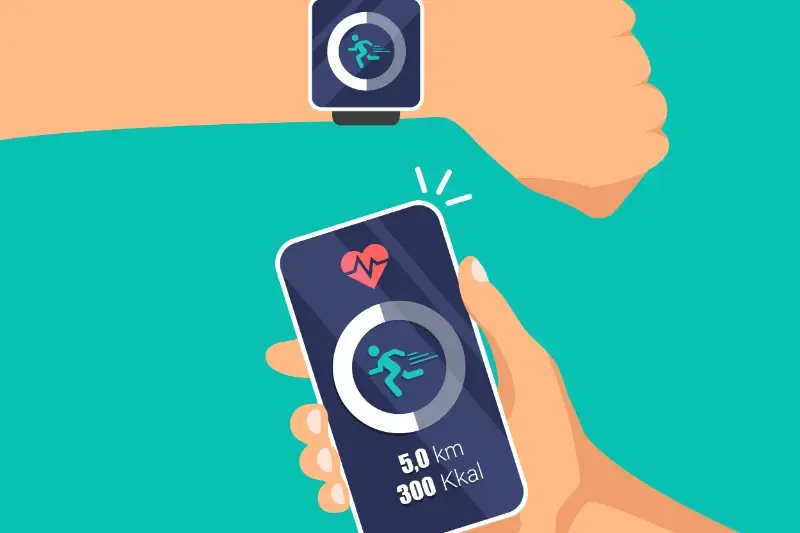From Zero to Hero: Planning Your App's Database Like a Pro
There's nothing quite like the sinking feeling when your mobile app starts crashing because the database can't handle more than a few hundred users. I've seen it happen countless times—brilliant app ideas that fall flat on their face because nobody thought properly about how to store and manage all that data. The app looks great, works smoothly during testing, then boom! Real users start signing up and everything grinds to a halt.
Most people think database planning is boring technical stuff that can be sorted out later. Wrong! It's actually one of the most important decisions you'll make during your mobile app development journey. Get it right from the start and your app will scale beautifully; get it wrong and you'll spend months (and a fortune) trying to fix the mess later.
A poorly planned database is like building a house on shaky foundations—it might look fine at first, but it won't last long when the pressure's on.
That's why I've put together this development guide to help you avoid the database disasters I've witnessed over the years. We'll cover everything from basic concepts to advanced optimisation techniques, all explained in plain English without the technical jargon that makes your eyes glaze over.
Understanding Database Basics
Right, let's start with the basics—and I mean the really basic stuff. A database is just a place where your app stores information. Think of it like a filing cabinet, but digital. Every piece of data your app needs to remember goes in there; user profiles, messages, photos, settings, the lot.
Now, databases don't just throw everything into one big pile. They organise information into tables—rows and columns, just like a spreadsheet. Each table holds one type of information. So you might have a 'users' table with everyone's details, a 'messages' table with all the chat history, and a 'photos' table with image files.
How Apps Actually Use Databases
When someone opens your app and logs in, the app asks the database "do I know this person?" The database checks its records and says "yes, here's their information" or "nope, never seen them before." It's a constant back-and-forth conversation between your app and the database.
The brilliant thing about databases is they're fast—really fast. They can find a specific piece of information from millions of records in milliseconds. That's why your Instagram feed loads so quickly even though there are billions of posts stored somewhere.
Planning Your Database Structure
Right, so you've got your brilliant mobile app idea and you understand what databases do—now comes the bit that separates the pros from the wannabes. Planning your database structure is like creating the blueprint for your app's memory system, and getting it wrong can cause headaches that'll last for months.
Start by listing everything your app needs to remember. User profiles? Check. Messages between users? Yep. Photos, settings, purchase history? All of it goes on the list. Don't worry about being too detailed at this stage; you can always trim things down later.
What Information Do You Actually Need?
Here's where many people go wrong—they either store too much information or too little. Think about each piece of data and ask yourself: "Will my app break if I don't have this?" If the answer is no, you might not need it right away.
- User authentication details (email, password)
- Core app functionality data
- Settings and preferences
- Content created by users
- Analytics and tracking information
The trick is to plan for growth without overcomplicating things. Your mobile app development guide should always include this planning phase because fixing a poorly structured database later is expensive and time-consuming.
Draw your database structure on paper first! It sounds old-fashioned, but sketching out your tables and their connections helps you spot problems before you start coding.
Choosing The Right Database Type
After years of building apps, I can tell you that picking the wrong database type is like choosing the wrong foundation for your house—it'll cause problems later that are expensive and time-consuming to fix. The good news? There are really only two main types you need to know about: SQL databases and NoSQL databases.
SQL databases (like MySQL, PostgreSQL, and SQLite) store information in tables with rows and columns, much like a spreadsheet. They're brilliant when your data has clear relationships and you need to make sure everything stays consistent. Think user accounts, product catalogues, or financial records—stuff that needs to be organised and reliable.
When to Use Each Database Type
NoSQL databases (like MongoDB, Firebase, and DynamoDB) are more flexible and can handle different types of information without forcing it into neat little boxes. They're perfect for apps that need to scale quickly or handle lots of different data formats.
- Use SQL for apps with structured data like e-commerce, banking, or booking systems
- Use NoSQL for social media apps, content management, or real-time features
- Use SQLite for simple mobile apps that don't need a server connection
- Use Firebase for rapid prototyping and real-time updates
The truth is, most mobile apps work perfectly well with either type. Don't overthink it—pick what your development team knows best and what fits your budget. Remember, this is one of those crucial decisions that can impact what separates stellar apps from mediocre ones.
Designing Your Tables And Relationships
Right, this is where things get properly interesting—and where I see most people make their biggest mistakes. When I'm working with clients on their mobile app database design, they often want to jump straight into creating tables without thinking about how everything connects together. Big mistake!
Tables are like containers that hold your data, but the magic happens in the relationships between them. Let's say you're building a social media app—you'll need a users table, a posts table, and probably a comments table. Each user can have many posts, and each post can have many comments. This is called a one-to-many relationship.
Primary Keys and Foreign Keys
Every table needs a primary key—think of it as a unique ID number for each row. Then you use foreign keys to connect tables together. The foreign key in your posts table would reference the primary key in your users table, showing which user created each post.
A well-designed database is like a well-organised filing cabinet—everything has its place and you can find what you need quickly
Keep It Simple
Don't overthink this part. Start with the basics and add complexity later. I've seen developers create incredibly complex database structures that look impressive but perform terribly on mobile devices. Your app users won't care how clever your database design is if it takes forever to load their content.
Security And Performance Considerations
Now that you've got your database structure sorted, let's talk about keeping it safe and running smoothly. After years of working with databases that handle everything from shopping apps to banking platforms, I can tell you that security isn't something you add later—it needs to be baked in from the start.
Protecting Your Data
Start with the basics: encrypt sensitive data and never store passwords in plain text. Use SSL connections between your app and database, and set up proper user permissions so people can only access what they need. I always recommend regular backups too—you'll thank yourself later when something goes wrong.
Keeping Things Fast
Performance is all about making smart choices early on. Add indexes to columns you search frequently, but don't go overboard—too many indexes can slow things down. Keep your queries simple and avoid loading massive amounts of data at once; pagination is your friend here.
Monitor your database performance regularly and watch for slow queries that need optimising. Most database systems have built-in tools that show you what's taking too long. Trust me, your users will notice if your app takes ages to load their data, and they won't stick around if it does.
Testing And Optimising Your Database
Right, so you've built your database and everything looks good on paper. But here's the thing—databases are like engines, they need a proper test run before you can trust them with real users. I've seen too many mobile app launches go sideways because someone skipped this bit, thinking their database would just work perfectly from day one.
Start with load testing. This means throwing lots of fake data at your database to see how it handles busy periods. Your app might work fine with 10 users, but what happens when 1,000 people try to log in at once? Testing tools can simulate this traffic without needing real users to crash your system.
Always test your database with at least 10 times more data than you expect to handle in the first year—you'll thank me later when your app goes viral!
Performance Monitoring
Once your app is live, you need to keep watching how your database performs. Set up monitoring tools that track response times, storage usage, and query performance. When something starts running slowly, you'll spot it before your users do.
Common Optimisation Techniques
Here are the main ways to speed up your database:
- Add indexes to columns you search frequently
- Remove old data you don't need anymore
- Optimise slow-running queries
- Consider caching popular data
- Scale up your server resources when needed
Remember, database optimisation isn't a one-time job—it's ongoing maintenance that keeps your mobile app running smoothly as it grows. This is where having a solid content strategy for documenting your optimisation efforts pays off.
Conclusion
Building a solid database for your mobile app isn't just about storing data—it's about creating the foundation that will support your app's growth and success. I've seen too many apps struggle later on because the database wasn't planned properly from the start. Trust me, fixing database problems after launch is like trying to change the tyres on a moving car; it's messy, expensive, and can break things that were working perfectly fine.
The steps we've covered might seem like a lot of work upfront, but they'll save you countless headaches down the road. Getting your database structure right, choosing the appropriate database type, and planning your security from day one will mean your app can handle whatever comes its way. Whether that's sudden growth, new features, or changing user needs.
Don't rush this part of your app development. I know it's tempting to jump straight into the exciting visual stuff, but your database is what makes everything else possible. Take the time to plan it properly, test it thoroughly, and your future self will thank you for it. Your users will have a better experience, and you'll sleep better at night knowing your app is built on solid foundations.
Share this
Subscribe To Our Blog
You May Also Like
These Related Stories

App Version Control for Beginners: Why Every Developer Needs a Safety Net

Your Complete Guide to Smartwatch App Development





